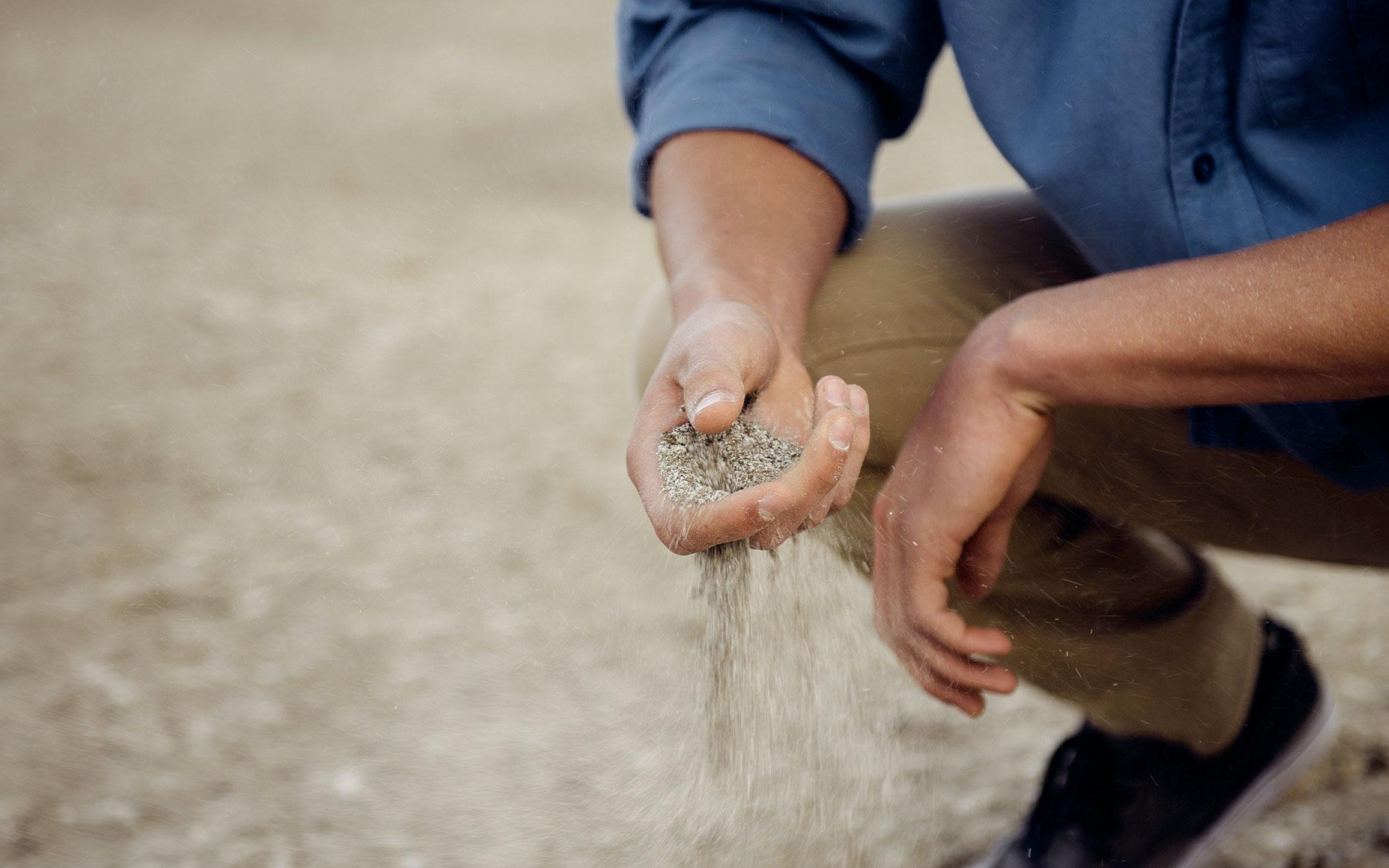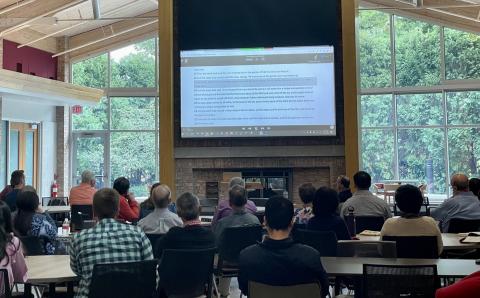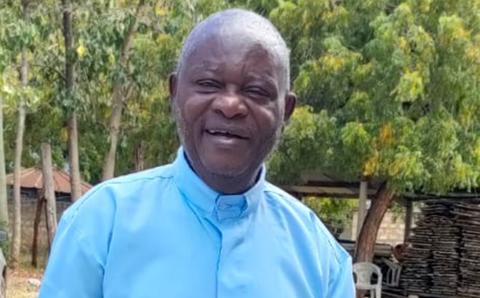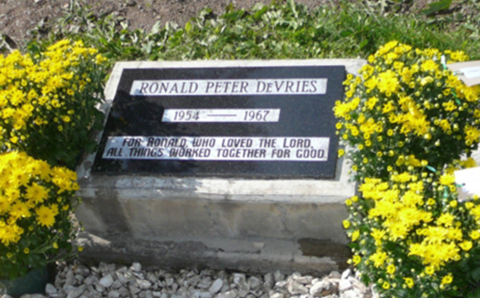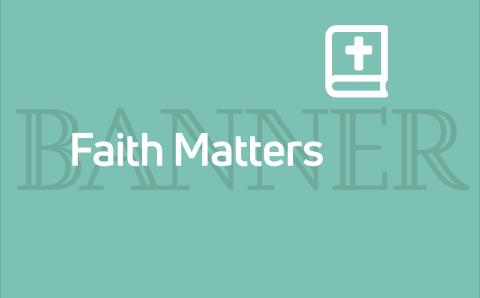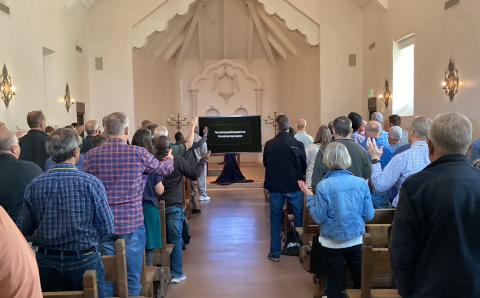“For dust you are and to dust you shall return” (Gen. 3:19).
I’ve always found these Ash Wednesday words to be beautifully poignant. As my pastor imposes the ashes and looks me in the eye, the words move that part of my soul that’s shaped for mystery. They connect to a primordial part of me that feels it is good and right that I share in the common denominator of creation, that I take my mundane place in the order of things.
These words also make another part of me bristle. After all, I am so much more than dust. I am bounding heart and rushing blood. I am crackling synapses. I am self-aware consciousness—that rarest of natural miracles. I love and long and hurt. I dream and strive and accomplish. I am dust? I think incredulously as I make my way back to my seat, the mixture of ashes and oil still glistening on my forehead. I don’t think so!
Our Twin Identities
At first blush, these two reactions may seem mutually exclusive, an irreconcilable tension that must be resolved.
The truth is, though, that these two responses—acceptance of our creatureliness and pride in our uniqueness among creatures—are both good and right. Both are consistent with the biblical anthropology of Genesis 1 and 2. The problem only comes when one half of the anthropological equation is distorted and privileged above the other.
In the first creation narrative of Genesis 1:1-2:3, we see that God creates humans toward the end of God’s creative activities. But—contrary to some popular belief—humans are not the “crown of creation.” As Carol Bechtel, professor of Old Testament at Western Theological Seminary, reminds us, “that honor goes to the Sabbath.” Not only are humans not the final and culminating product of God’s creative actions in Genesis 1; humans don’t even get their own creative day. We are made on the sixth day along with “all the creatures that move along the ground” (Gen. 1:25). In other words, we share our big day with beavers, badgers, and billy goats.
At the same time that the Genesis 1 narrative places humans in the midst of the rest of creation, it makes clear that humans are unique. Human beings alone among God’s creatures are made in God’s own image and likeness (Gen. 1:27). Many others, including myself, have written elsewhere about how sharing in God’s likeness is much more of a call to responsible care rather than to the privileged exploitation the Western church has all too often taken it to be. However, what I want us to see now is that the Genesis 1 creation narrative holds in dynamic tension humanity’s commonality with the rest of creation and our distinction from it.
The creation story of Genesis 2:4-25 does something similar. In Scripture’s second creation narrative, God created human beings not with the words of God’s mouth, but by the works of God’s hands. God kneels and fashions human beings “from the dust of the ground” (Gen. 2:7). The Hebrew is even more explicit. It tells us that God formed the adam from the adamah. In Hebrew, adam means “human being” or “man,” and adamah means “soil” or “ground.” To say that God formed the adam from the adamah is both to employ one of the many puns the Hebrew language is so fond of (but so often get lost in the translation of the text) and to assert a profound metaphysical truth: humans are creatures, made of the same molecules and atoms as the rest of creation.
Yet the story does not stop there. After God fashions the soil-creature, God does something shocking: God breathes his very own spirit into it.
Both Genesis creation stories are united in their shared insistence that humans are both similar to and distinct from the rest of creation. Humans are made from the stuff of the earth and share their creative day with all the other land animals. At the same time, with the image of God and the breath of God, human creatures are distinct among created things.
Our Twin Identities Out of Balance
If humans are both dust and reflections of the divine—two sacred, God-given identities meant to inform and contextualize each other—what happens when the balance is thrown out of whack? What happens when one identity is emphasized over the other?
Well, we don’t have to read much further in Genesis for an answer. Humans distort their twin identities in the very next chapter. The serpent tempting the woman in Genesis 3 strikes at the heart of the dynamic tension between humanity’s creatureliness and our uniqueness in the midst of creation.
The serpent targeted human limits.
“God knows that when you eat from [the tree] your eyes will be opened, and you will be like God, knowing good and evil,” the serpent says in Genesis 3:5 (emphasis added). To be like God—that is, to be without creaturely limits—was at the heart of humanity’s fall. By believing the lie and reaching for the fruit, the first humans rejected the dynamic tension of God’s good design and elevated their exceptionalism at the expense of their mundanity. It’s a lie we’ve been reaching for ever since.
What happens when our human identity becomes imbalanced—when we exercise our dominion over creation without regard for our creaturely limits? The answer is all around us.
Since the advent of the industrial revolution roughly 200 years ago, the average surface temperature on Earth has risen about 1.2 degrees Celsius (about 2 degrees Fahrenheit). Of course, Earth’s temperature always fluctuates. That’s part of God’s good design. But this time is different. This temperature rise has materialized hundreds of times faster than at any other time in history and has occurred even though, according to natural climate variations, Earth should currently be entering a cooling period. These increased temperatures are leading to stronger and wetter storms, longer droughts, more intense flooding, bleaching corals, and scorching Arctic summers. Millions of people have been and will be forced from their homes and thrown into food insecurity as a result.
Biodiversity is currently in free fall. Almost 1 million species are currently threatened with extinction—more than any other time in human history. Many of these may be lost within decades. And the top five reasons, according to the 2019 Global Assessment Report from the United Nations, are all human-driven: changes in land and sea use, climate change, pollution, natural resource exploitation, and invasive species.
Maybe that’s why the Ash Wednesday words come at the end of God’s heart-wrenching description of the consequences of humanity’s rebellion. After God finishes a litany of innocence lost (Gen. 3:14-19), God takes one more opportunity to remind his creatures exactly who they are. I can imagine God grabbing their shoulders and shaking them, wracked with grief but intent on getting a final point across: “Remember, dear creatures: you are dust.” God’s reminder is meant to correct the distortion, to restore balance to our twin identities. It didn’t take long, though, for humanity’s hubris to push God’s warning from its collective memory, and our arrogant attempts at reaching beyond our creaturely limits have continued all the way from Genesis 4 until today.
Our Twin Identities Rebalanced
So how might we once again recover balance between our dual identities as creatures of dust and image bearers of God? By letting the text be our guide.
Often in the Western world, our image-bearing role has been understood as a blank check for us to do as we please with the rest of nonhuman creation. For many, this becomes the bedrock justification for an extractive form of dominion that desacralizes creation and reduces God’s good works to little more than raw material for firing our industrial machines. Far too often in the modern Western mind, the image of God has been conceived first and foremost as a privilege to be exploited and enjoyed, often at the expense of the rest of creation.
Yet the text frames the imago Dei not first as a privilege, but as a sacred responsibility. For instance, the Hebrew word translated as “image” in Gen. 1:26-27 is tzelem, often translated in the Old Testament as “idol.” This may seem strange, but it makes sense when we remember what an idol in the Old Testament was: a reflected representation of a higher power. In the ancient Near East, new rulers and kings of large empires would often erect statues of themselves throughout their territory. The purpose was to communicate their power and authority to subjects in far-flung provinces. Of course, the statues of these rulers were not the rulers themselves. But they did point to the ruler and remind the subjects who their true king was.
This is one way that Genesis 1 describes our image-bearing identity. Humans are uniquely privileged to share in God’s likeness, yet we are bound to exercise that privilege in a particular way—one that reflects the rule and reign of the Creator. Image bearers of God do not merely carry a collection of discrete privileges divorced from the rest of creation; rather, they have an immense and sacred responsibility toward creation. The responsibility, carried out through our actions in the midst of creation, is this: to point the rest of creation to its true and only King, to mirror the joy and delight of creation’s Maker by using our own creative words to speak goodness over all created things, and to represent creation’s true King in the midst of creation. We are not meant to usurp the authority of the true King or to use our status as a license to abuse and exploit. Instead, we are called to live in the midst of creation in such a way as to remind the created world—and ourselves—who the true ruler is.
As with our imago Dei identity, I believe our identity as creatures of dust has also been misunderstood. This identity is not a cause for self-hatred or revulsion, but a reminder and affirmation of our deep connection to the rest of God’s good creation. In Genesis 2, humans are not the only creatures formed out of the ground; so too is “every living animal of the field and every bird of the air” (Gen. 2:19). What’s more, God brings these other soil creatures to the man to see if any of them might be suitable helpmates for him. The man then engages in an act of deep intimacy: giving the creatures their names. In other words, Genesis 2 shows us that humans not only share common origins with other creatures (i.e., the earth), but from the beginning they have also been in deep, intimate relationship. Indigenous wisdom, as well as St. Francis and other Christians throughout history, have recognized this relationship and have a word for it: kinship.
I’m often met with skepticism when I invite other Christians to consider Scripture’s descriptions of their kinship to the rest of the nonhuman creation. Many are concerned that it risks sliding into idolatry. I can appreciate the motivation behind this concern. I also believe that it is misplaced.
There is a massive gulf between loving creation as kin and then turning around and worshiping those kin as god. Kinship need not open the door to idolatry. The doors it does open tend to be much less dangerous and much more transformative: affection, appreciation, delight, love. Baba Dioum, a Senegalese forest engineer, said in 1968, “We won’t save places we don’t love. We can’t love places we don’t know. And we don’t know places we haven’t learned.” Kinship offers us the opportunity to learn about the creatures and creation around us so that we might learn to love them and that we might still be moved to save them.
Many of our Western theological wineskins about our place and role in the midst of creation have been filled with notions of superiority and entitlement. God’s good creation is in crisis as a result. It is time for us to reimagine, with curiosity and creativity, new (or rather, very old) ways of relating to Earth and its creatures. Kinship and responsibility are two gifts to help us as we do.
Remember You Are Dust
Lent is one more of these gifts. It is an ancient invitation to a holy reset. It is an invitation to recognize the cultural, economic, and political forces that elevate a distorted version of privileged human exceptionalism and to exchange it for humble human responsibility, sacrifice, and service. It is an invitation to replace human separation from the nonhuman creation with kinship.
It is a regular opportunity—even for just 40 out of 365 days—to embrace our connection to the earth, to look at the suffering of creation without looking away, and to recommit to sacrificial care of God’s glorious world.
After all, are we not creation too? Remember that dust you are.
About the Author
Rev. Kyle Meyaard-Schaap is ordained in the CRC and is a member at First CRC in Grand Rapids, MI. He is the author of Following Jesus in a Warming World: A Christian Call to Climate Action. His website (kylemeyaardschaap.com) includes more information about his more than a decade of creation care work.

